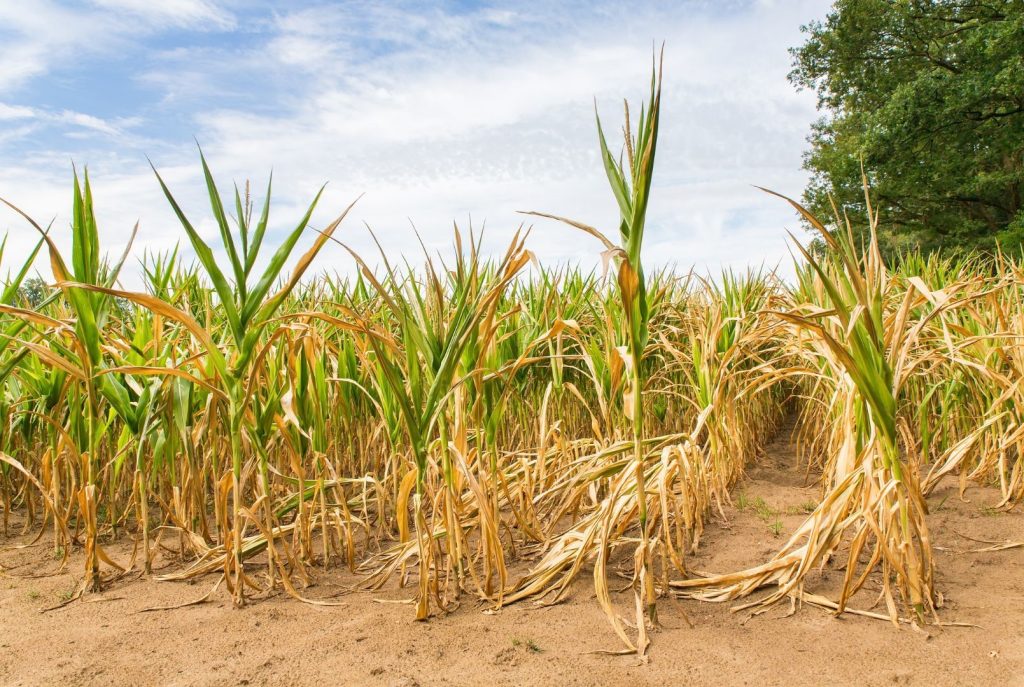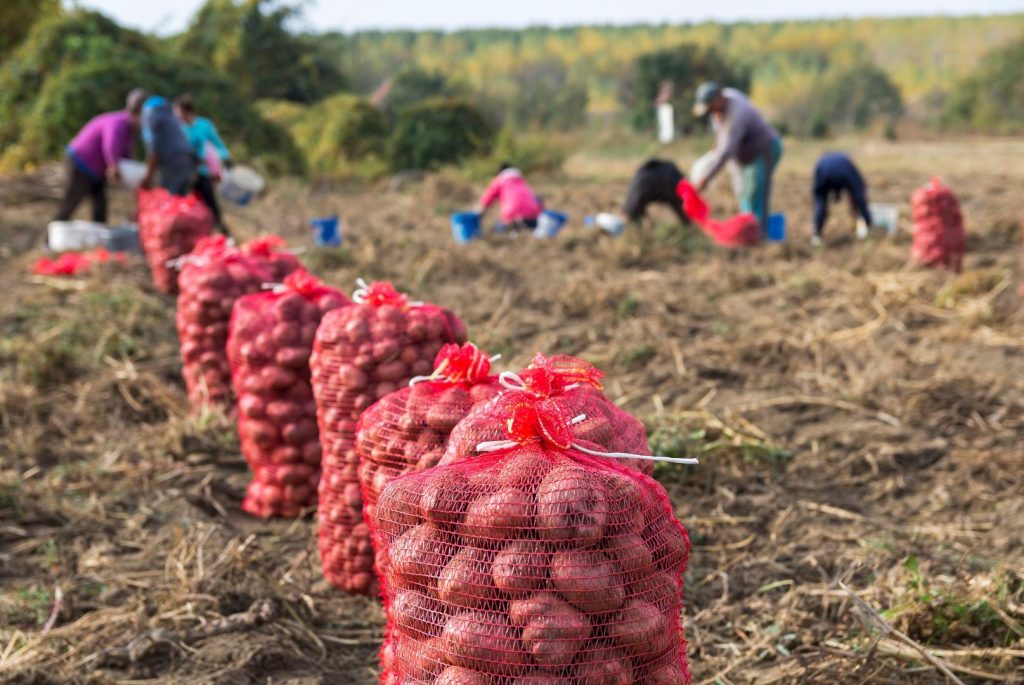Risks in agriculture: types of challenges that farmers face
Farmers nowadays face multiple risks, so read the following article to explore all the potential challenges someone should consider before starting his own agribusiness.
Weather Risks:
The weather conditions are usually not constant in a region, and climate change seems to increase this fluctuation.
Various weather phenomena, including hurricanes, frost, hail, floods, and excessive heat, can negatively influence agricultural production, leading to significant yield losses or crop failure.
Risks due to the effect of flooding, hail, and strong winds:
Excessive rain can increase the problem of soil erosion and leaching of essential nutrients from the soil, decreasing the available resources for the plants (less growth and yield) and increasing the pollution of surface water bodies (e.g., eutrophism).
Flooding of the field and poor drainage (waterlogging) can cause anaerobic conditions for the plant root system, leading to wilt and “drowning of the crop.” If the crop remains underwater for a long time, the farmer will probably face a complete crop failure (especially for annual plats). Additionally, such conditions may destroy the irrigation channels and move the equipment, increasing the problem for the farmer.
Hail can also lead to extensive crop damage, shredding of leaves, broken stems and small branches, bruising, or fruit drop. The damage can be extensive in young plants and crops right before harvest.
Strong winds can also cause the lodging of crops (e.g., wheat and maize) and the break of stems and branches, damaging the plants and decreasing their production.

Risks due to Effects of high temperature on crops:
The high temperatures on crops can lead to photosynthesis and yield decline, wilting, scorching of the leaves, drying of the flowers (failure of pollination), and sunburn (in leaves, fruits, stems, branches, and even the trunk). In severe cases, plants may die.
High temperatures may also affect the nutrient mobility in the soil and reduce the efficiency of both fertilization and plant protection.
When it gets hot and dry, certain pests and diseases become more active and can cause big problems for crops. They start to multiply quickly and can spread across fields, causing infestations and outbreaks of diseases.
Effect of humidity and evapotranspiration
Humidity: High humidity levels can affect plants in several ways:
Transpiration regulation: Plants lose water through transpiration, water vapor escaping from their leaves. High humidity slows down transpiration because the air already contains a lot of moisture, reducing the rate at which plants lose water. Conversely, low humidity speeds up transpiration, which can lead to dehydration and stress in plants.
Imagine plants as busy little machines working hard in the sun. Like any hard worker, they can get hot and need to cool down. That’s where evapotranspiration comes in! It’s like nature’s built-in air conditioner for plants. Picture tiny pores on leaves opening up, releasing water vapor into the air, just like sweating. This cools the plant down, like how you feel cooler after sweating on a hot day.
But evapotranspiration isn’t just about keeping plants cool. It also helps them get their food! Think of water as the delivery truck for nutrients in the soil. When there’s enough water (thanks to evapotranspiration keeping things moist), plants can easily “grab” these nutrients through their roots, like a shopper picking groceries off a shelf. But if there’s not enough water, the delivery truck gets stuck, and the plants don’t get the nutrients they need to grow healthy and strong.
Risks due to Pests and Diseases:
Because of the continuous application of pesticides, crop pests can develop resistance, leading to the decline of the effectiveness of control measures and an increase in crop damage and economic losses for the grower. Additionally, climate change has increased the frequency of events – environmental conditions favoring pathogens leading to disease outbreaks.
Fruitful destruction: Certain insects, like fruit flies, lay eggs inside fruits, rendering them inedible and reducing their market value.
Spreading Sickness: They act as little taxis, carrying harmful diseases from plant to plant.

Munching and Burrowing: They chomp on leaves, stems, fruits, and roots, leaving your harvest with bite marks and reducing yields.
Risk associated with the attack locusts causes huge problems. The locusts can eat almost the entire crop. In some areas, it’s a severe problem that can lead to up to 90% destruction of crops in a few minutes and hours.
Environmental Risks due to pollution: Due to the increased man-made pollution in various forms, like leakage of industrial effluents directly into the rivers, lakes, and small water bodies, it causes threat not only to the soil but also the water percolates into deeper layers of soil from top to bottom layers it will be fully equipped with industrial toxic pollutants, and it will decline the growth of the crops and develops a higher toxicity level in the soils.
Risks associated with the market
Changes in the price of agricultural commodities may impact farmers’ profitability. Exchange rates, international trade laws, shifts in consumer tastes, and changes in supply and demand dynamics are examples of market hazards. Apart from this, numerous intermediaries (middlemen) are involved in the food value chain. This decreases the profit of the farmers, increases their dependence, and increases the end price of the product that the consumer has to pay.
Risks of rising Cost of inputs and profiteering: As technology is increasing day by day th, the cost of seeds, fertilizers, pesticides, equipment, availability of finance, and interest rates are rising for farmers, so they are unable to meet the expectations that they want desirable. At the same time, it is a common phenomenon that the salespeople of agriculture input profit, taking advantage of the farmers.
Risks associated with Technology: Reliance on technology, including new crop types, machinery, and irrigation systems, brings the possibility of equipment malfunctions, incompatibilities, and the ongoing expense of technological advancement.
Risks related to policies and regulations:
Modifications of the policies, laws, rules, and subsidies may affect market accessibility, input prices, and agricultural practices. Farmers are exposed to an increased level of risk due to policy uncertainty.
Labor Scarcity: Finding and paying workers for different agricultural tasks like planting, weeding, and harvesting can be difficult, particularly in areas with seasonal labor shortages or shifting immigration laws.

Infrastructure Risks: Inadequate transportation, storage, and market accessibility infrastructure can impede the smooth flow of agricultural products, resulting in spoiling, delays, and decreased profitability.
Legal Risks:
Strict Standards: Farmers must adhere to various regulations regarding food safety, animal welfare, and pesticide use. These standards can be complex and change frequently.
Non-Compliance Risks: Failing to comply with regulations can lead to fines, product recalls, and even criminal charges in severe cases. This can severely damage a farm’s reputation and market access. Farmers may be exposed to uncertainty and financial risk due to legal matters such as land title conflicts, environmental damage responsibility, and food safety regulation compliance.










































































